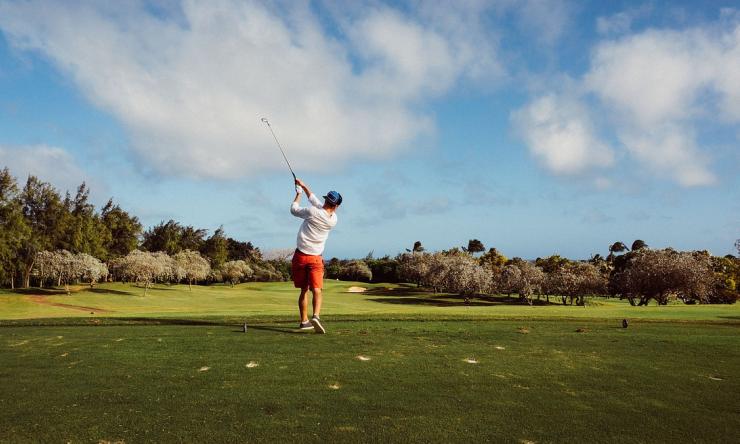Master your golf game: how to play for a lifetime
Golf maintains its popularity for the physical and social aspect of the game. While the leisure sport is low impact, injuries can occur without proper form and preparation. A Baylor College of Medicine orthopedic surgeon explains how to safely make golf a lifetime hobby.
While golf will not provide the same results as a weightlifting exercise, walking the course for your four-hour round is a consistent, low-impact workout that can keep you limber with the right form. Stretching the body before and after golfing is crucial. Stretch the hamstrings, groin muscles, torso and abs to prepare your swing; as you swing, you rotate with strong force. The shoulders, hips and knees also are important areas to target when stretching. If you fail to warm up and go for a big drive, you could get hurt.
“Your muscles are at the center of explosive movement, so when you don’t warm up, muscle strains can happen,” said Dr. Adil Ahmed, assistant professor in the Joseph Barnhart Department of Orthopedic Surgery at Baylor and the Michael E. DeBakey Department of Veterans Affairs Medical Center. “You might see a golfer with a golf club behind their head rotating side to side, which is a good start, but you need to do more than that – rotate the body to get your ab and oblique muscles ready. The shoulders also are important because they are critical in the swing.”
Most golf injuries derive from chronic, repetitive, degenerative movement. Upper extremity injuries include bicep tendonitis and labral injuries. Bursitis and shoulder injuries also can occur. Those who do not warm up or are stiff in the shoulder will find that the scapula does not move fluidly due to chronic, repetitive movement in the shoulder. Wrist injuries might happen if you hit the ground instead of the ball when you putt or swing.
Some might power through discomfort or injury for the love of the sport. If you feel consistent pain in one area, it might be time to reassess your form: rotation in your hips, leading leg or trailing leg. If an injury occurs and you feel pain after swinging a club for a few hours, get an evaluation as you could have a labral tear in the shoulder.
"If you’re painful or stiff in one area, there is a natural tendency to overcompensate, then you overexert and ask more from the rest of your body and joints. It’s a full body swing, and you need your body to be in sync. It’s not only about warming up and stretching, but making sure the form is correct,” Ahmed said.
A golf injury could respond well to nonsurgical treatments and very rarely will you need surgery. Physical therapy helps to focus on the basics: form and hip motion, scapula and shoulder motion, and posture. Physical therapy will make sure the muscles are not only strong and stable, but that you are cognizant of what your body is possessing. Over-the-counter anti-inflammatories also are beneficial when dealing with injuries.
"The sport itself doesn’t require a lot of strength or explosive activity, but strength training is critical for muscles, bones and joints to keep the body strong for golf and other activity. Weightlifting and strength training are important for longevity, which is why people can play golf in later years,” Ahmed said.










